Local Reno artist Scott Oliver and Bay Area artist Veronica Graham explore both of Veronica’s video art pieces featured in the Holland Project’s recent exhibition, Where We Were When We Were Not What We Once Were. Listen to the audio interview HERE.
You can revisit the exhibition here.
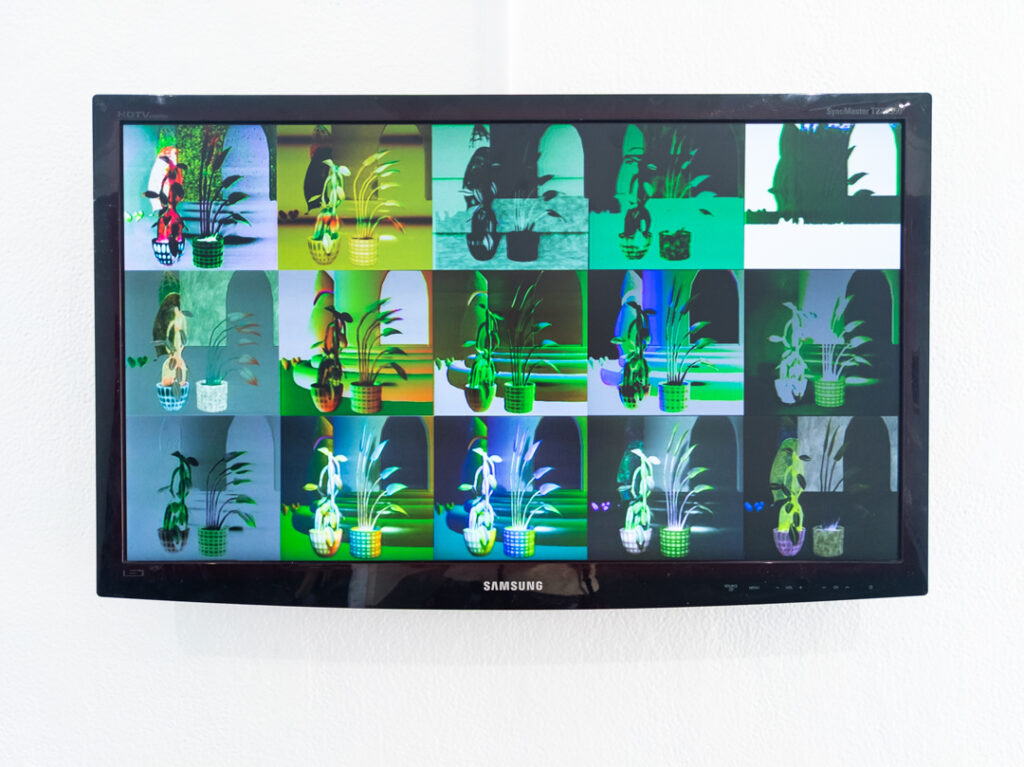
Scott
So, I thought we could begin with the two video pieces you had in the show at Holland. And for listeners that aren’t able to see the show, you can find the videos on Veronica’s website, vagraham.com. So, your videos definitely resonate with the other works in the show and the overall theme. But I’m curious, what was your experience making work during the pandemic? And then more specifically, how did the two video pieces sort of develop?
Veronica
So during the pandemic, I think I felt like the future was really unknown, especially at the point when I was working on these pieces. I feel like it was about four to six months in. Yeah, so things were just changing all the time. And I definitely was looking at a lot of news. I think that that made me not want to work on the long-term projects that I had previously been working on. I really switched to, “What can I do in a month? What can I do in a couple of weeks that just felt like the same scale that the world was moving on?” And it felt delusional almost to work on something that has this distant plan, when you just didn’t really know where things were heading.
Scott
I think it’s interesting that you mentioned the news because the content of the pieces seems almost like anti-news in a way.
Veronica
Yeah, they were in response to the circumstances I was in and kind of a reactionary response, wanting to move in the opposite direction of what I was feeling all around me. So the Water Sims one quotes the Tao Te Ching, and I’ve read it periodically. It wasn’t the first time I read it. But that book is all about non-action, which felt so appropriate to the moment because we really just couldn’t do anything. I think literally, when I was working on Water Sims was when the fires were happening. We couldn’t see people and we couldn’t leave our house. And so it really resonated with me that idea of non-action and being comfortable with non-action. And then water was this metaphor for non-action. So thinking about how water is just there, it’s existing, it’s always eroding things even in its presence. But it’s also considered this very weak thing, even though it has this strength to it. Which just felt interesting to me. And then water on top of that, in the digital modeling world and simulations, water is sort of like a high-mark point. Simulating water means that your engine is working really well. So there’s all these videos online of like water simulations, which is something that I find really calming to watch which makes sense, right? Because water is sort of a calming thing to see. Even the simulation of it is calming, and then to go through the act of simulating it, it’s like this further understanding of how water works, which I felt resonated with me. I think how my mind works is through repeating things in a lot of different contexts and learning through making and through doing and so when I’m simulating things like animations in 3d or in that world, I learn how the body moves, I learn how a physics is, so it just felt like that, a combination of things. I know you’ve mentioned this a little bit before when we talked about Ursula K. Le Guin’s translation and why that maybe was mentioned.
Scott
Well, I think it’s kind of significant, just in the sense that it’s gone through this other filter, number one, but then also who she is sort of comes into play. And, you’re sort of bringing all her work, or at least a reference to it into the piece. And it’s almost like moral philosophy, via sci-fi or something.
Veronica
Holy books are like that, right? They have a moral undertone to all of them, I feel like. Yeah, it’s definitely like a reflection of me, it’s a translation through me, too, that I would gravitate towards her translation.
Scott
Yeah. One of the things I got from it was this kind of level of hubris. And also, and I know this sort of idea about the uncanny valley is kind of reserved for portrayals of human characteristics, but there’s something kind of uncanny about the plants, the way the plants act and the water simulations were approaching nature, but not quite nature.
Veronica
Yeah, they’re poor. I like that. I like the poor replica. I mean, I think it’s also what’s been within my reach too. I feel, even more so when it’s poor, it makes you more aware of what’s happening, right? It makes you understand what’s missing. And you like it in a way that you wouldn’t normally if it was a perfect replica I think. So there’s a certain awareness in the loss.
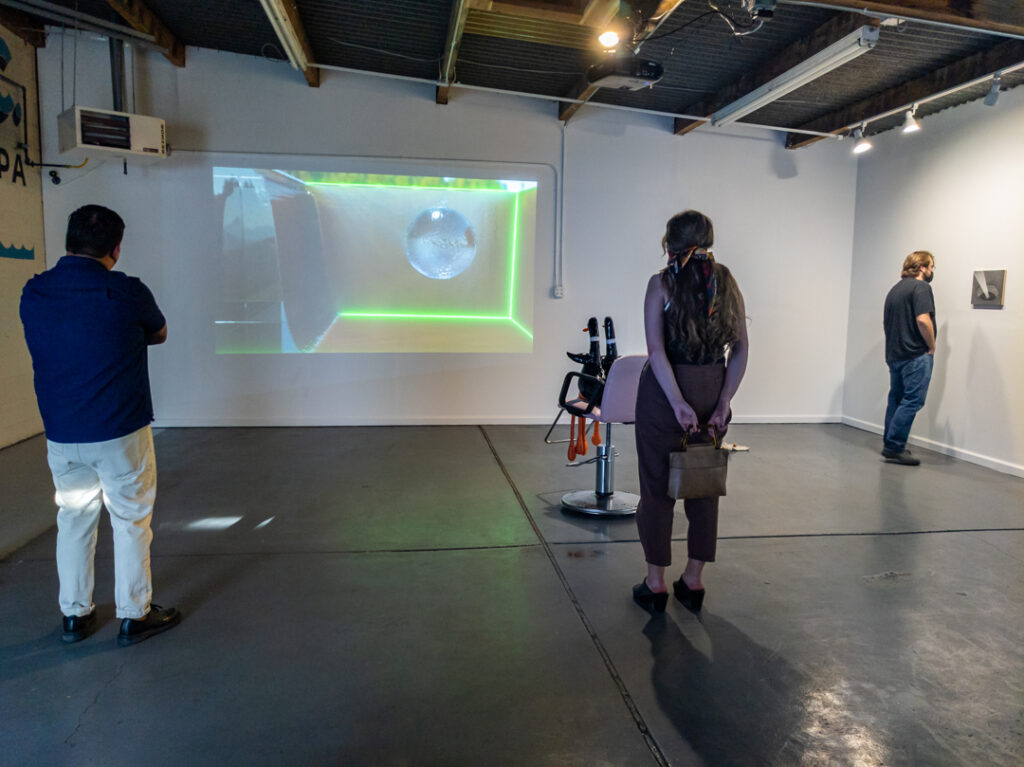
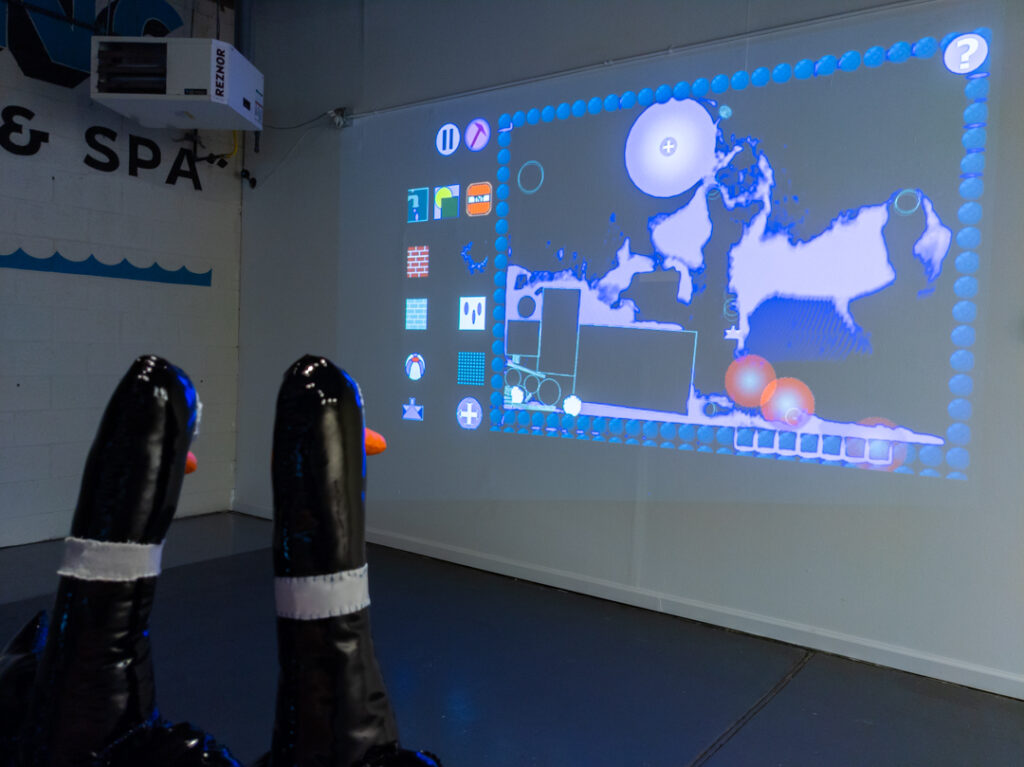
Scott
Right. And the other thing I wanted to bring into this is you collaborated with Julia Kim to do the sound for the pieces. And I’m curious about how that collaboration worked. But we were having a conversation a while back where you said you were getting more and more interested in collaboration?
Veronica
Yeah, so that was another thing. You know, a lot of deep thoughts during a pandemic. And one of them was a decision like I was spending a lot of time alone. I was reading. I was just really craving the conversation around ideas. I was talking to people emotionally about what we’re going through, but there wasn’t a lot of talk around ideas that you get when you talk about art. This kind of other level of thinking, I guess. So I wanted to cultivate that more in my life. And I just came to the conclusion that I needed to work on collaborating, like collaborations where me and Julia had already worked together on previous projects, but I just decided no more solo projects. I just wanted all new projects I started to be collaborations. So this was kind of getting back into that mode, right? Because I didn’t want to return to the VR projects, which were so big. So this was a sort of a smaller way of doing a collaboration with somebody.
Scott
Yeah. And was this one of the first videos you’ve ever made? I mean, I know you’ve been working on VR and stuff, which is kind of related to video. But these are more what you’d expect when you encounter video work in a gallery setting?
Veronica
Yeah, these are my first ones. I like it. I mean, I like how short it is, it’s more like a book. It has linearity.
Scott
To me they are very succinct statements in a way.
Veronica
Yeah. It also reminded me a lot of designing posters actually when I was working on it. Maybe the use of text, how I was using it. Actually, the two potted plants originally had text in it, but then it just felt like it was distracting from the actual images.
Scott
That one has a real sort of surveillant quality to me. I mean, maybe it’s because it’s the same image repeated over and over. So it’s like a grid screen. But the other thing is the video treatments you use, and then the sound with it, kind of like there’s this sort of modulation of mood even though the images kind of stay the same.
Veronica
Yeah, I’m glad it had that effect. I mean, it was sort of this observation of an anchored life, you know, like a potted plant isn’t going anywhere, it’s just there, right? It’s just being watered and cared for in one spot. And there was something about that that I felt in my own life being sort of just in one contained area. And then also just appreciating what is good about that. If you observe something long enough, you start to see these hidden layers to it. And I feel like that’s kind of going out. And it really was me taking different renderings of the same image, and then putting it through these modular filters or different things, which felt a lot like screen printing. It really was like the most tactile way I’ve ever dealt with digital stuff before, right? You were just slowly tweaking things and then in the moment, seeing the results, and then you know, everything was just constantly recording.
Scott
Well, that’s a great segway to my next question. So you describe yourself as a new media artist and printmaker, which is accurate, but it also sounds like a bit of an oxymoron. And you do make VR experiences, and you do make printed matter. You’ve also made paintings and sculptures and installations. There’s this kind of fluidity in your practice between analog and digital format, which also seems integral to the content in the work. And so I’m wondering if you can talk a little bit about the relationship between the real and the imaginary. And I guess I’m sort of transposing analog and digital. But also, you reference world-building in your artist statement. And so I’m just curious to hear about that kind of back and forth that seems to be very present in your work, but also helps kind of communicate and crystallize the content.
Veronica
Yeah, I actually like that you say real and imaginary versus digital and analog. Because, I do think of it as moving in between these sorts of internal and external worlds and that may be both exploring that relationship in just a digital space, or just an analog print space. But I think that’s more the focus of my work. And the analog and digital is sort of something that is just sort of already blurry, right? And it’s just getting more so. So the separating out of those is less significant, I think. But I will say that I do need the tangibleness of working on something like a book or a print, just for the way my mind works. Because in the digital stuff, it’s like you can zero in so much that you get lost in it.
Scott
Do you think it kind of answers to the body in a way?
Veronica
Yeah, it can answer to the body. I mean, the limitations of the body can be really exhausting to make books. Same as sitting in front of a computer for hours, right? I think the way you share that information is very different. I think the digital stuff will definitely disappear faster than the print stuff, but the digital stuff can reach farther. So there is that.
Scott
It also seems infinitely changeable. You know, sort of at will.
Veronica
The digital stuff. Yeah, I mean, I think that’s why I need the print because sometimes it’s like there are too many options, right? I think that I like personally who I am as a person, I’m pretty inconsistent and reactionary to things. So I need to respond to a certain circumstance or I need that space and those constraints in which to work to get the results I want, but I do like pushing that line, right? I like stuff that is kind of blurring the borders between these internal and external worlds because I think it’s a very real space we’re in. We are constantly sort of projecting fictions onto the world we live in.
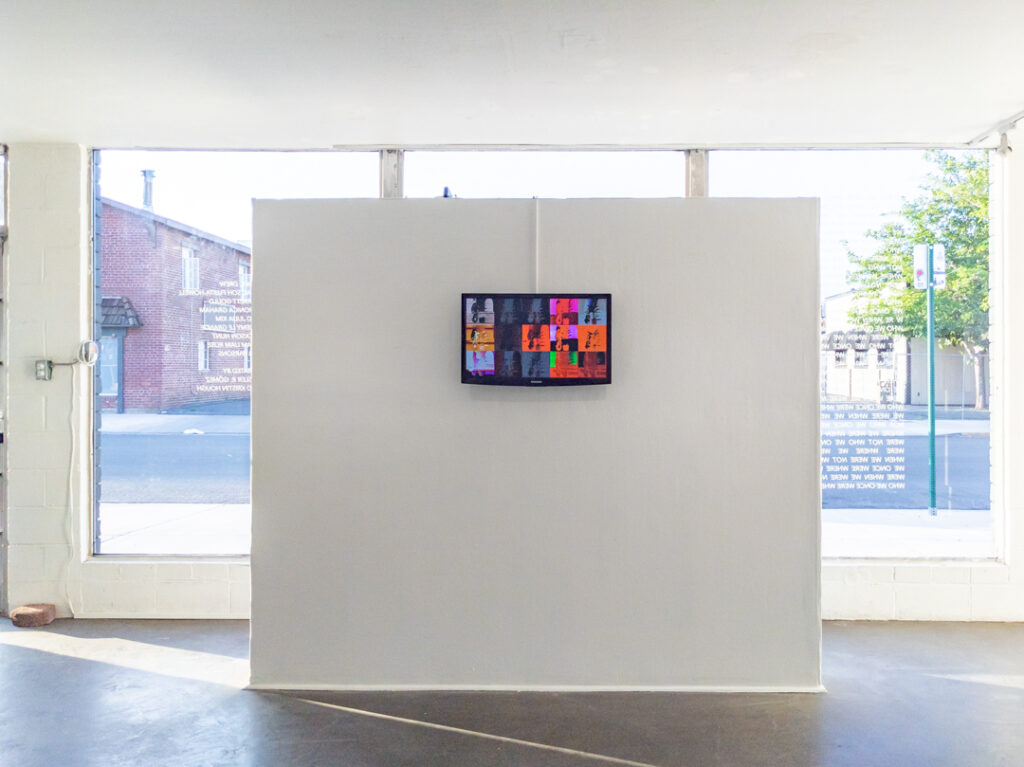
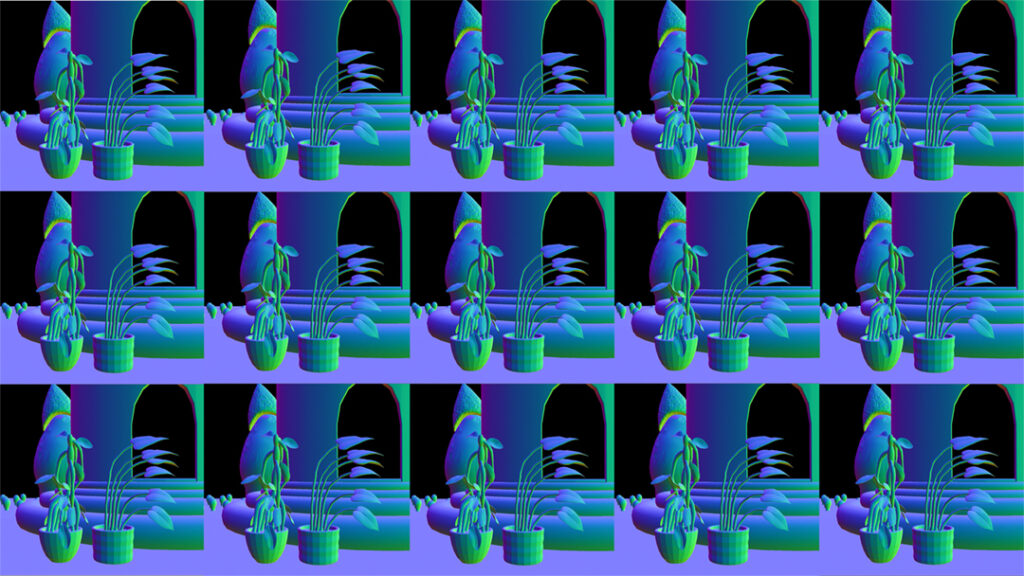
Scott
Yeah. So you’re also teaching. I mean, I know you’ve taught a lot, but you’re teaching a class at Stanford that is specifically about world building. And I guess I was like, how do you teach world building?
Veronica
Like, what is the process? You know, I think that it’s a frame, right? It’s a way of exploring ideas. And in world building, you have the idea, and you’re looking at the systems all around the idea. What is it existing within? It’s like a layered approach to making something so you’re slowly building up complexity, either building up or out, and then that creates the world. And that creates the ideas in which it exists.
Scott
Right. So almost creating a context for the ideas. So I’m curious, can you give an example of an assignment or prompt that you would give to students?
Veronica
Well, one thing that I do a lot in my practice, and I’ve used as prompts is sort of this idea of a walk, like taking a walk through space. That meandering, the different directions you could potentially move into sort of is a world. And they may do it by their own experience of walking through the world and walking the same path repeatedly and seeing what different things come to mind. Or they can build a story around it. The last quarter I taught we use this tech space program called Twine. It’s a way of creating multilinear stories.
Scott
Speaking of multi-linear stories, this is how you would describe your printed publications, I noticed that you make a distinction between comics and books. And I’m curious to hear why that is?
Veronica
Okay, I love a tangent. So let’s go down that path. I think most of my books, a lot of them are really dealing with the language of games and cartography. Whereas my comics may also have those languages in it, but then I’m also thinking about the language of comics and the language of working with the comic frame, the panel, and sequencing images. So I’m always sort of pushing the boundaries of that language, or that definition in the work that I’m doing. But it’s about where I start, where my inspiration begins when I’m starting the work, I don’t know if it’s always apparent in the work, but that’s how I divide it out.
Scott
I mean, one thing I noticed was that it seems like the comics kind of fall into a more personal sort of realm in terms of what’s expressed through them.
Veronica
Yeah, I think the stuff I’ve done on my own definitely, collaborations less so but my own stuff, yeah. The weather report series came from that same place before the pandemic where I started just wanting to work on shorter form work. Like stuff that was just responding to the moment that was happening. I think I started working on those right after Trump got elected.
Scott
Okay. Well, the last one you completed you also completed during the pandemic.
Veronica
Yeah, and that was a response to this moment, and this time, I think it’s the most direct and free work that I do. It’s like when everything else is hard for me to do where I’m hitting a wall, I can always do that work. I can sit down and do it, I think because it’s more similar to a journal entry where it feels like this is a space where I can get out a certain thought process or behavior pattern. And think about all the pieces that are whirling around in my head when I’m doing that and put it down on the paper. And in that way, it becomes sort of this exorcism, this way of getting it out of me.
Scott
Yeah. I mean, they also seem decidedly not collaborative.
Veronica
Yeah. I’m supposed to make one more of those books. It’s the one thing that does go against my new rule. Break it or what? Well, that said, anytime you print a book on my level, for a small independent printer, it is a collaboration. Because I go into a print studio I’m working with, I work at Tiny Splendor, which is a print studio in Berkeley, and I’m always in contact with other printers talking about how I can get certain results. So technically, there is a level of collaboration when you’re in a shared space. Yeah, so maybe I can still do that last book. I don’t know.
Scott
I hope so. Because I think they’re kind of wonderful. I have emotions when I read them. Let’s put it like that.
Veronica
Man. I had a lot of emotions when I made it. I mean, maybe actually less so. When I made it, it was like me being detached from my emotions.
Scott
So last time we spoke, you mentioned that you were about to go on a two-week-long silent meditation. And you said something to the effect of it allows you to access something that you can’t access by other means. And ever since that conversation, I’m like, what does she mean by that? Can you elaborate?
Veronica
What do I mean by that? It’s like a very intense period of meditation and silence. You don’t talk to anybody else, even though you’re with a group. I think when I leave that space, I have a huge amount of sensitivity to the world I’m in. It’s like I have no skin. I feel like a puddle. Like I’ve just totally broken down all those layers that I’ve built up before I get in there. And so that’s good. I think I like having that sensitivity, I think what happens is that if I haven’t gone for a long period of time, I start to feel a certain numbness. And numbness for me often leads to melancholy. So I need this kind of retreat from the world a little bit to then have a sensitivity to the world again, you know?
Scott
Yeah. And I mean, I don’t know, it’s not very helpful to make distinctions between life and art. But I mean, it sounds like that is sort of becoming integral with your art making process. But is that true?
Veronica
Yeah, I don’t know. It’s like the one time that I just stop and all I’m focused on is my body in that moment. And, for me, it’s really hard to get away from an art project. I mean, it’s sort of haunting all my days, all my interactions. So it was the first time I found something that just sort of took that out, or at least it was a practice to kind of take myself away from that and not have that pressure. And then when I come back to the work, I think I have a better sensitivity to what I’m looking at. I’m less myopic in my perspective, which I can definitely get, because I can be really obsessive. So it allows me to let go of things and get perspective, I guess.
Scott
So is this meditation practice also a part of your daily life?
Veronica
I try. Yeah. Lately, I’ve kind of slacked off. I’m bad knowing that I’m going in a few days. After I get back, I’m really good. But it usually kind of slacks off after a couple of months, when I’m going through a hard time I make up my level again, because I know it’s something that helps me deal with stress. But when I feel good, I kind of drop off. Which is not the best. But you know, we’re all flawed, right?
Scott
As far as I know…
Veronica
Well, keep me posted.
Scott
So speaking of art projects, like longer term art projects, back in 2019, you were working on a VR project called Diatribes, which is sort of a haunted house of global warming fears. And you’d put out this really wonderful little book, which kind of served as a blueprint for that world. I’m just curious to know what’s happening with that project now?
Veronica
I am getting back to it. Yeah, for a while, the digital projects were really hard for me, I think partly because I was teaching. And then also, so much was getting channeled through the computer that at the end of the day, I didn’t want to go back to a screen. I would have preferred to read or write or do other things. So it still was in the back of my mind. And the play testing really taught me what people’s inclinations inside the spaces that I built are. And so now that I’m returning to it, I’m really retooling it a lot. So before it was a scripted space, but now it’s just gonna be this giant arena. And it’s more about people interacting with objects and less about following this story through these tangents. So people will be in this giant arena, there will be these objects and these spaces that they can interact with really simply. I think the way people operate inside VR, it’s almost like a baby where they like, stick their tongue out and want to lick everything. They don’t really need it to do all that much. They just need to know that they have a sort of presence in the space, and that it will be responsive to them. And the objects themselves have meaning, they’re artifacts.
Scott
I just have a kind of technical question, can you sort of observe these people and this space as an outsider?
Veronica
Yeah. I set up a projector screen, so people would be in the space during the demo. And then if their friends were with them, you could just watch everything. Yeah, a computer screen would always be set up. It’s just not as exciting to watch.
Scott
Well, it sounds really cool. It looks really cool. But it sounds like it’s also changing and evolving now.
Veronica
It’s changing. I also felt like the diatribe wasn’t diatribe-y enough. So I’m taking a different approach with that, too.
Scott
So what I think of when I think of diatribes is kind of like taking a stance. Is that what you mean?
Veronica
Yeah, like a personal sort of rant. Somebody sort of going off on something and having really strong opinions. And I think that I can be that person. I think we all can be that person. I think we hear a lot of that these days. It’s a lot of one-sided conversation. So just sort of picking that apart a little bit. And how we deal with fears because I think a lot of the time it is a reaction to people feeling like they don’t have control over the world they live in.
Scott
Yeah, it’s not good for openness is it?
Veronica
It’s not so much. But I think it is also real and natural. And I don’t say this is all bad. This is me, like really relating to that and trying to understand where that comes from.
Scott
Right. So what else are you working on?
Veronica
I’m doing a book with an artist named Ryan Ko out of Brooklyn. It’s more of his vision. And I’m sort of working on the print and some of the content that goes into it. But it’s an operating manual that is like a user interface written and designed for cows. So the self-milking fleet of cows. So that was the liner description we wrote. So we should probably modify that. But yeah, it’s actually really cool. It’s all printed on sort of semi transparent paper, much like a book I did in the past called Load. So it’s about this layering of interfaces. And it’s coming out nice. I’m excited. I think it’s just slow, because we both are artists, trying to live our lives, pay our bills, and all those things. So then I’m also working on an AR (augmented reality) comic that I’m excited about that deals with telling multiple narratives at once, using the AR to kind of put overlay video and GIFs on top of the page.
Scott
Okay, so it’s like between a phone or device, and the book.
Veronica
Yeah, so you would kind of like scan in the content, and then the phone just sort of immediately brings it up when it captures the page. And then the videos will play or the gifs or it could be single images. I’m still in the very beginning of that book. There’s a lot of testing involved. Because AR is new to me, it’s also just new in general. So the potential there is still being discovered.
Scott
It’s really nice to think about augmented reality being a more contained experience. Because the idea of it being out in the world is just too distracting. Like to be paying attention to multiple inputs like that. But it reminds me of a children’s book where they used heat sensitive ink. Like you had to use a hairdryer to see the images.
Veronica
Yeah, it’s a guy who does tons of screenprints. He’s known for doing 30 colors on a screen print, some crazy amount. Yes, I know exactly what you’re talking about. It is very similar to that. I mean, all tech is interesting to me. AR can be interesting. It’s just that it may not have been exposed to the thing that interests me yet. But my experience with it outdoors, it’s just one too many variables. Which, as someone who’s making the work, I just feel like so many times it falls flat because it just doesn’t function on the phone in the way it was planned to. And then too, the outside world has so much going on in it already. And then to have the phone overlaid on it, it’s just like, I don’t know this. Yeah, I can’t think of a way that adds more meaning to the space.
Scott
So my last question, I can’t let you go without getting some recommendations. Which is just to ask, what have you been reading, watching, listening to?
Veronica
So I’ve been really sick of streaming apps. So I’ve been listening to the radio. And I’m very into KFJC which is Foothill Community College radio. So recently they had a 12-hour Sun Ra special, which was great. May is their special month and the special month was great, but I don’t think those stay online past like 30 days, but they have a regular “sludge hour” that I really like. I forget the DJ’s name, but it’s good. It’s like a late-night one. And then in Kansas City, I have a friend who has a show on WFM. Called New Flanland with Flannery that I recommend. I just read this book called Keep Walking Intently. And it’s about the Surrealists and the Situationists and the Flux. It’s by Laurie Waxman. And I found it really interesting because it talks about walking as a form of play. That for me really resonates because I’m interested in play in my work, but more as discovery not competition, so I feel like all of them approach play in that same way.
Scott
I’m thinking of the Situationist’s idea about derive and psychogeography.
Veronica
It’s so related to what I’ve been making, which are pretty much walking simulators in VR. When I read it, this was actually a gift from a friend and I don’t think she really thought of it in connection with my work. It was just sort of like, I don’t know, maybe you’ll like this. But I was like, oh! This so relates, like there are so many things that I can use from this book in how I designed this virtual space. That’s like what we make artwork for right? It’s that moment of making the connections. The actual work is grinding.
Scott
Well, thank you very much for your time today. It’s wonderful to talk with you.
Veronica
Yeah, same, thanks for having me.
You can read and see more at vagraham.com
